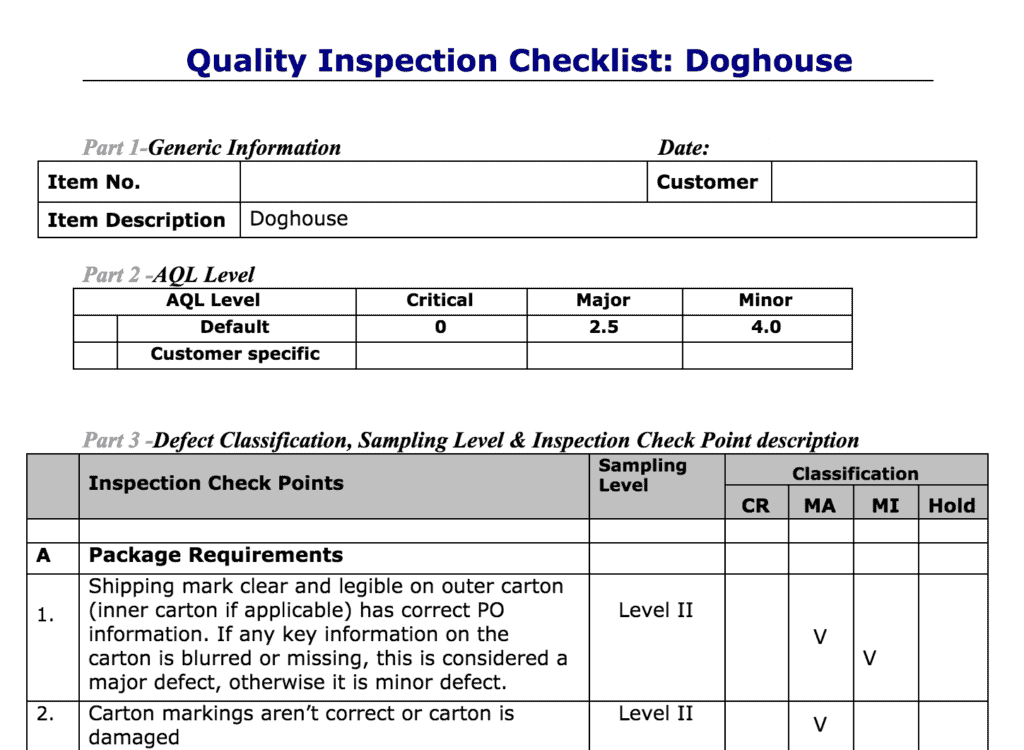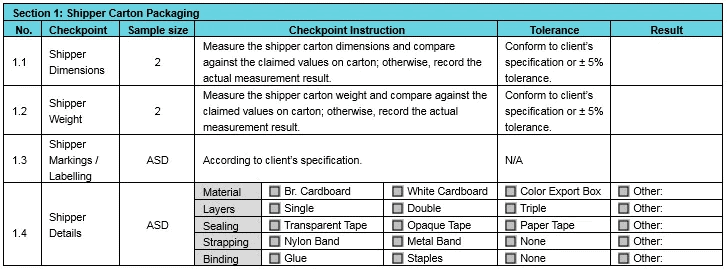Due to the continuous competition in today’s world, any business that does not match customer’s expectations would find it incredibly difficult to thrive. In such a setting, for any firm to come across products that do not match customer’s expectations is a tremendous cost: not in terms of monetary losses. But the loss of integrity and image of the business too. As a result, when you come across products that do not meet the requirements that customers demand. The expense of scrapping and reworking those products can be significant.
Customers are unlikely to compromise on quality when purchasing a product. You may have found yourself selecting the slightly more expensive product when faced with a choice between two items simply because you believe it gives a better user experience due to higher quality. As a result, it’s critical that you maintain consistent and acceptable product quality to match client expectations.
Any company that wants to assure client happiness must invest in quality control.
What Is A Quality Control Checklist?

Importers frequently inquire about the clearest way to communicate their product specifications to their suppliers as well as any inspection personnel who may evaluate an order prior to shipment.
Quality standards and product requirements can easily be misunderstood. As a result, your or your customers’ expectations are frequently not met.
Inspection checklists for quality control can be a simple solution to this problem. An inspection criteria sheet (ICS), a QC checklist, a quality inspection checklist, or a quality control sheet are all terms for a quality control checklist. All of these terms refer to a document that lays out your supplier’s quality requirements and specifications in a clear and straightforward manner.
A quality control checklist is a written document that details the contents, packaging, color, barcodes, appearance, potential flaws, functionalities, and special requirements of your items.
Similar product inspection checklists generally have the same inspection requirements. However, each importer usually has its own set of restrictions for its product. That is why it is critical to tailor your own checklist.
A good QC checklist takes care of both the product requirements and the inspection criteria by:
Defining the quality standards and product specifications that the supplier must meet and also establishing objective criteria for checking the product to guarantee that it meets the customer’s expectations.
So What Exactly Is The Harm In Not Developing A Quality Control Checklist?
If you believe that simply stating what you want in your shipment to your supplier over the phone or through Skype will be enough for them to completely comprehend and deliver you the required materials, you are, unfortunately, mistaken. Without a clear and detailed QC checklist, there’s a good chance your supplier won’t fully understand your requirements, which will almost certainly result in product defects; not only that, but word of mouth alone isn’t enough to communicate your expectations to your quality control inspection team.
-
Customers are Unlikely to be Satisfied with your Products
Most large-scale garment retailers around the world, such as Walmart, have a set of strict guidelines that you must follow before being allowed to supply them; these standards include very clear requirements regarding the quality of the garment as well as the packaging. You must also comply with a number of regulatory criteria in the area of fabric labeling; failure to do so may result in severe penalties imposed by the authorities.
You cannot be sure that your supplier will meet all of the requirements unless you provide a detailed checklist that outlines them. This can actually be harmful in case the entire shipment gets rejected due to lack of conformity to required specifications, in addition to the government fines.
-
Inspection Checklists Help you Meet Regulatory Requirements.
Meeting legal requirements can mean the difference between your goods reaching their intended audience and being confiscated at customs. Before shipping, use effective quality assurance checklists to guarantee that your items meet regulatory requirements.
A portion of a QC checklist that outlines the target market and the legislation or criteria that the product must follow is usually included.
A quality control checklist for manufacturing a toy aimed at the US market, for example, would include the following section:
Under the Consumer Product Safety Improvement Act, all toy importers must comply with ASTM F963 (CPSIA).
How to Make a QC Checklist
You want your QC checklist to be brief enough that production employees and QC inspectors can refer to it quickly and readily while on the job. However, in order to make it concise, you don’t want to leave out crucial information about your requirements.
Your QC checklist shouldn’t be a one-time document that you put together in a few minutes one day. Rather, think of your QC checklist as a “living” document that you can update as your experiences with your supplier and product quality change. You may need to include points for unpredictably bad quality issues that arise during inspection or quality difficulties that are exclusive to your product design.
How can you use a QC Checklist to Overcome these Issues?
Even though it takes time and effort to create a complete checklist, but it is strongly suggested that you do before permitting your supplier to begin manufacturing. This assures that you and your supplier are all on the same page when it comes to the output and the process, especially since the supplier’s feedback is incorporated into the QC checklist. This will safeguard you against potential errors and flaws in the products and manufacturing process. Which might lose you consumers and damage your company’s reputation in the market.
Five Essentials Of An Effective Quality Control Checklist:
A quality control checklist has five essential aspects that must be included in order for it to be effective. Some are more visible to importers, while others are frequently overlooked or unknown. The following are the five components:
- Product Requirements
- Packaging Requirements
- On-Site Tests and Checks
- Flaws Classification
- Collaboration between the Importer, Supplier, and QC Staff
1. Product Requirements
Specifications for the Product
The most obvious topic to include in a QC inspector most importers is product requirements. And they usually devote more effort to defining their product needs than to any other area of working with their provider. However, many inspections fail because the order does not fulfill the importer’s product specifications.
One of the most typical causes for suppliers failing to satisfy standards is a lack of understanding.
By addressing the following, a good QC checklist will help clear up any confusion about product requirements:
Material:
You could want to indicate the zinc coating thickness or, in the case of fabric, the GSM.
Dimensions and Weight:
Importers frequently include requirements for their product’s weight and dimensions in their checklists.
Specifications for Color:
A sample from mass production is often compared to an approved sample or Pantone color swatch to ensure that a product’s color specifications are met.
Labeling and Markings:
In several industries, such as apparel and electronics, accurate labeling is critical for regulatory compliance. Any product marks and labelings, such as hangtags or a CE mark, can be described in a quality control checklist and compared to your specifications.
2. Packaging Specifications
Aside from product specifications, professional importers are often well aware of the necessity to define how their goods should be packaged. After all, packaging not only protects your goods during transportation but also contributes to their aesthetic appeal and influences consumer impression.
Dimensions and Weight of Packaging:

The weight and dimensions of your packaging might have a big impact on your delivery expenses.
Assume you’re shipping 1,800 boxes of cosmetics from South Korea in a 40-foot container.
You may need to rent a room in a second container if the boxes are just one inch wider than your specifications. What may appear to be a little disagreement can have far-reaching consequences throughout your supply chain.
Labeling Requirements for Cartons:
Some importers are picky about the way their suppliers mark their containers. You may also have distributors who have certain labeling needs.
Walmart shops and Amazon fulfillment centers, for example, each have their own set of requirements that their suppliers must adhere to. Label size and contents are standard requirements.
You should also specify if handwritten comments on boxes are acceptable or if printed labels are required.
Materials for Packaging and their Variety:
For most importers, packaging materials and assortment methods are critical concerns. The manner in which a product is packed in a carton, as well as the materials used, can have a significant impact on the condition in which you get it.
Packaging that is mold and humidity-resistant is typically required for goods manufactured in humid, tropical locations like Thailand. More fragile or perishable commodities may require additional cushioning or silica dehumidifier sachets to keep them fresh throughout transportation. In addition, heavier products must frequently be packed in such a way that the cartons do not crush when stacked.
Graphics, Packaging, and Labeling for Retail:
Because most goods remain packed in shipper cartons for the majority of distribution, retail packaging standards are more significant for product branding and look than protection.
You’ll want to make sure your supplier follows your specifications for retail packaging color and labeling, particularly any that relate to local restrictions. To prevent youngsters from asphyxiating, certain countries, for example, require polybags to include warning labels and small holes.
It’s critical that your QC checklist contains packaging specifications. You can prevent undue harm to your product while also safeguarding your brand and customers by defining specific packing standards with your supplier ahead of time.
3. Product Testing and Inspections On-Site
Importers are becoming aware of the necessity to explain their product’s specifications and how they want it packaged. However, many importers forget to include on-site product testing and inspections in their quality control checklist. This is especially true for smaller businesses that lack a specialized QA inspection manager or someone with similar experience.

What should the Product Testing Technique and Tolerances be?
If you know what kind of testing your product will need. Pro writers at Papertyper can help you articulate the technique and tolerances for optimal results. It’s also a good idea to write down the technique and your tolerances for the results because:
- It’s possible that your inspector or supplier is unfamiliar with the test.
- Your desired test technique and result tolerances may not be consistent with any standard utilized by your inspector or supplier.
4. Classification of Flaws
When a QC professional inspects a product, one of the most important components of their report is any quality flaws or other concerns discovered, as well as the amount of each.

The frequency of such flaws discovered, their severity, and the manufacturer’s tolerance for such issues are all factors that go into determining whether a product passes or fails inspection. All of these elements are included in the industry-standard AQL to produce a clear, overall inspection result.
- Minor – flaws found in small amounts that don’t harm a product’s salability and aren’t usually noticed by the client.
- Major – flaws that do not endanger the user’s safety but do not meet your standard
- Critical – flaws that pose a risk to the user’s safety, may result in property damage, or otherwise affect the end-user of your product.
5. Collaboration in the Creation of Inspection Checklists between the Importer, Supplier, and QC Personnel
Collaboration amongst all key parties is the most typical feature that importers overlook while preparing their QC checklist. And that’s a shame because this is perhaps the most crucial element. Consult your supplier. Explain your expectations for the goods, your wish for a comprehensive assessment, and which areas of the product should be examined. If feasible, talk to a QC manager at the plant that makes your product about any flaws or quality concerns you have.
Discuss the inspection procedure with any external quality control personnel who will be inspecting your product. Find out what industry-standard on-site testing and checks they recommend, if any, and on what sample size of goods they recommend.
Based on your product kind, price, and target market, you most likely have your own quality expectations. That should be reflected in your checklist.
Collaboration between you, your supplier, and your quality control team typically results in a better mutual knowledge of product needs, packaging requirements, on-site testing, and defects.


